31 incredible facts about extreme weather
Meteorological gems
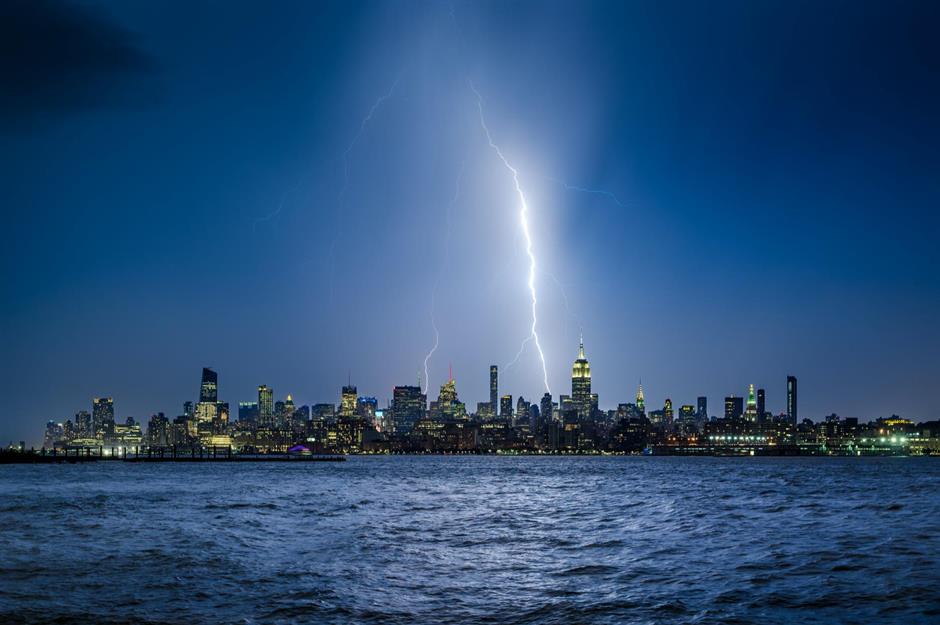
It has the sunniest place on Earth
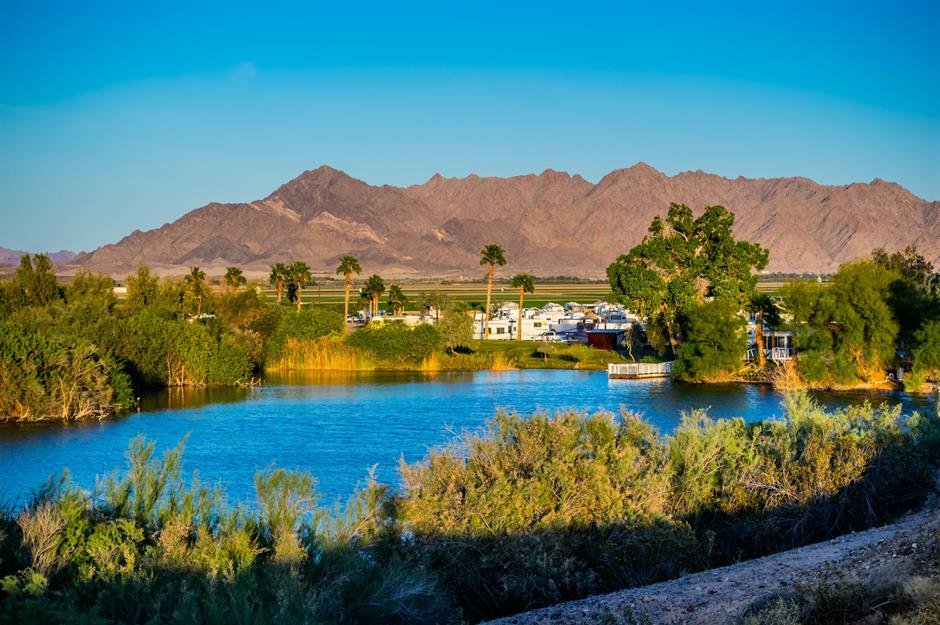
The little city of Yuma in southwest Arizona is officially the world’s sunniest place, according to the World Meteorological Organization. Yuma gets more than 4,000 sunlight hours per year and has an average of 11 sunny hours per day throughout the year. Its average yearly rainfall is 7.8 inches (20cm) while its highest average temperature is 106°F (41°C) in July. Another Arizona city, Phoenix, comes in as the second sunniest with an average of 3,872 sunlight hours per year.
And the unofficial hottest-ever recorded temperature

The hottest-ever temperature (134.1ºF/56.7ºC) was recorded on 10 July 1913 in Furnace Creek Ranch, California in the Death Valley desert. However, the record has never been recognized officially due to possible problems with the accuracy of the reading. It's difficult to calculate and record such a measurement as air temperature will change in the shadow while the ground temperature can exceed air temperature by as much as 122ºF (50ºC). Strangely, 1913 also saw Death Valley's coldest temperature – the mercury plummeted to 15°F (-10°C) at Furnace Creek on 8 January.
2020 nearly topped it
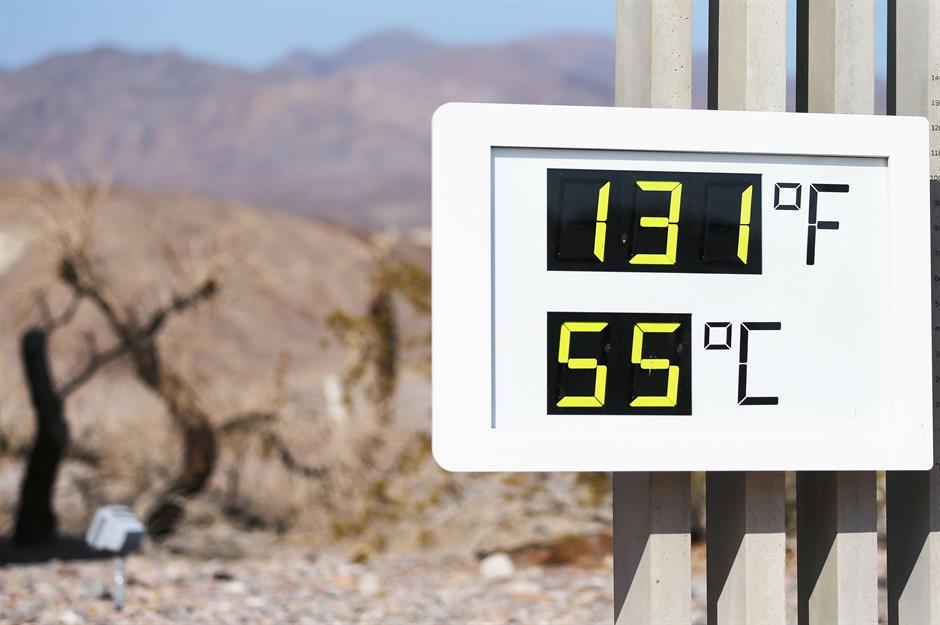
The desert valley followed this scorching temperature up in August 2020 when once again one of the highest temperatures ever recorded on Earth was taken here – 130ºF (54.4ºC). Known as the hottest and driest place in North America, the valley's shape (a long, narrow basin walled by high, steep mountain ranges) is the reason why it experiences such extreme summer heat. Heat radiates back from the rocks and soil and becomes trapped in the valley.
Maryland holds the record for the most rainfall in a minute

The town of Unionville in Maryland got a record-breaking drenching on 4 July 1956 when 1.23 inches (3.12cm) of rain fell in just one minute. According to the World Meteorological Organization, it is the greatest rainfall to ever fall in one minute and be reliably recorded to date.
Discover these epic weather fails when the forecasters got it badly wrong
But Mobile, Alabama, is the rainiest city

The city of Mobile on the Gulf Coast in Alabama holds the record for being the rainiest city in the US with 62.45 inches (159cm) of precipitation (meaning water from the sky in any form) annually on average, according to data from the National Oceanic and Atmospheric Administration (NOAA). The city has a mild subtropical climate which means humid summers and mild wet winters.
Syracuse is the snowiest city

The city of Syracuse in New York receives an average of 114.7 inches (291cm) of snow annually, making it officially the snowiest city in America, according to NOAA data. The next snowiest is also in the state of New York: Buffalo which gets an average of 91.9 inches (233cm) of the white stuff each winter. Both cities are in a region impacted by so-called lake effect snow, which occurs when cold air moves across the open and relatively warm waters of the Great Lakes causing clouds to form in narrow bands. These clouds can produce as much as two to three inches (5-7cm) of snow per hour.
It was once so cold that the Mississippi River froze along its entire length
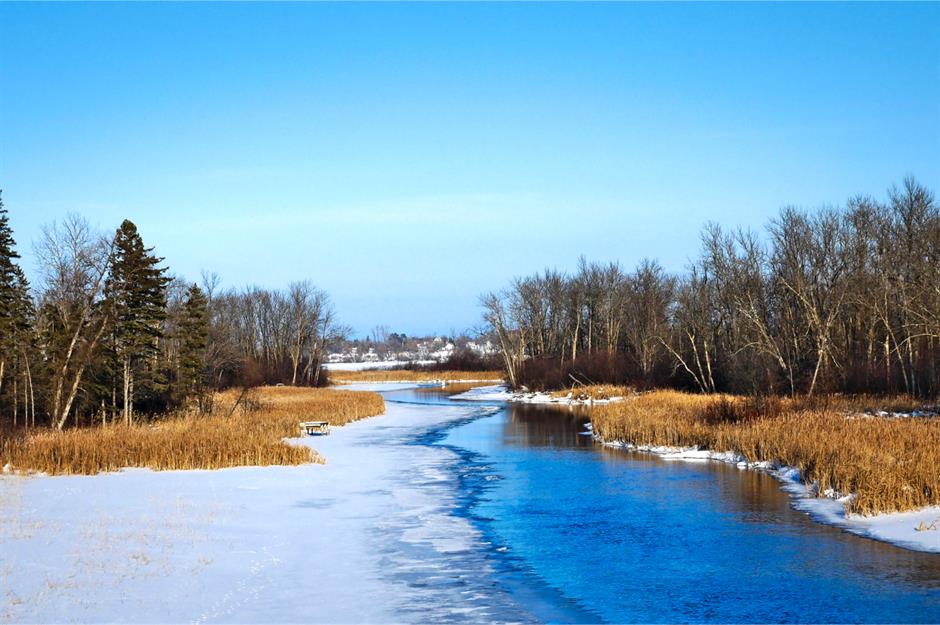
The US experienced some of its lowest ever temperatures in February 1899 when a cold weather front now known as the Great Arctic Outbreak swept across the country. Fort Logan in Montana hit an extraordinarily low temperature of 61°F (−51°C) and even Florida shivered as temperatures fell to the all-time state record low of −2°F (-18°C) in Tallahassee. According to NOAA, ice was seen flowing down the Mississippi River, past New Orleans and out into the Gulf of Mexico with a one-inch thick layer forming at its mouth in East and Garden Islands Bay.
Love this? Follow our Facebook page for more weather features and travel inspiration
February 2021 was the coldest in 30 years
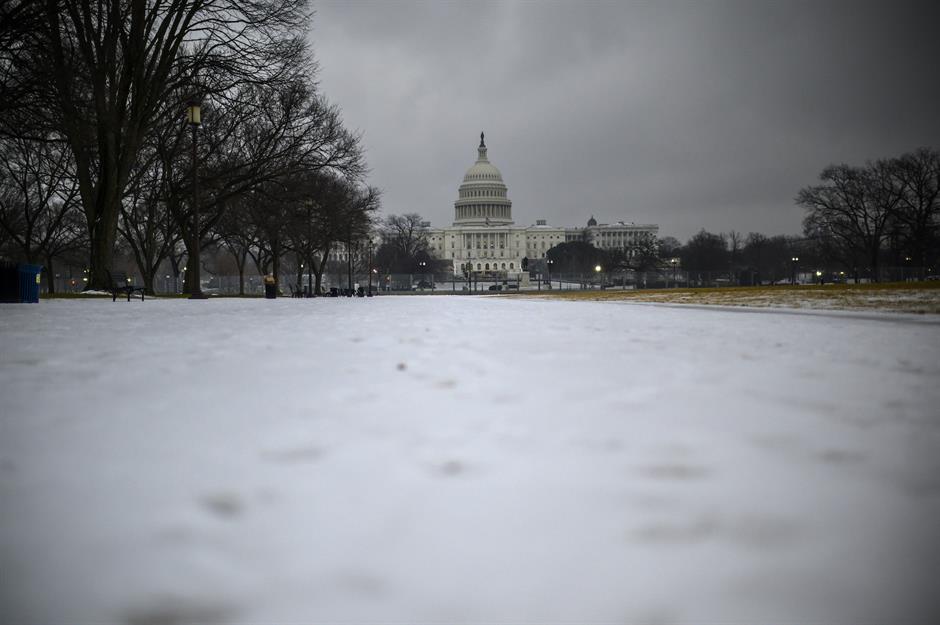
As an Arctic air mass took over much of the nation, temperatures plunged to historic lows in many places, including Washington DC, in what was the coldest February for 30 years, according to scientists at NOAA. Texas was one of the worst affected by the extreme winter cold snap with several locations recording their longest streak of below-freezing temperatures ever and major power outages experienced. For the states of Arkansas, Iowa, Kansas, Missouri, Nebraska and Oklahoma it was among the top 10 coldest Februarys on record. For Texas, 2021 was its 11th coldest.
Over 1,200 tornadoes happen a year

Most of the world’s tornadoes occur in the US and usually take place between April and June with an average of 1,253 tornadoes per year. These powerful storms mostly result from supercell thunderstorms. Although tornadoes have been recorded in every US state, you're most likely to see one in Texas. With typically 146.7 tornadoes a year, the state has also experienced some of the worst in recorded history.
But until 1950, American weather forecasters were forbidden from talking about tornadoes
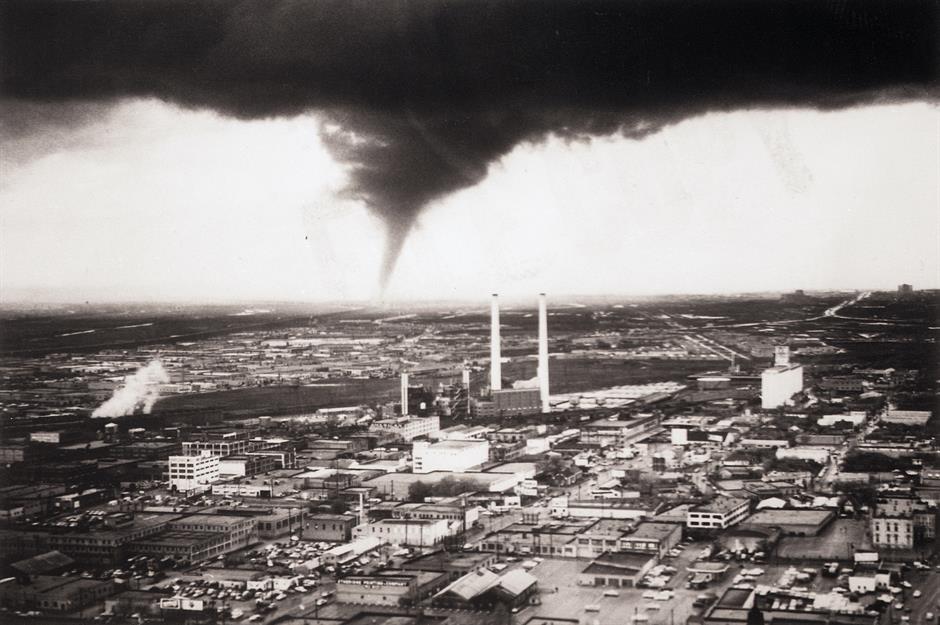
From 1887 up until 1950, American weather forecasters were forbidden from attempting to predict tornados. According to an article by the Storm Prediction Center, the use of the word "tornado" in forecasts was “ strongly discouraged and at other times forbidden” due to concerns it would lead to mass panic. Very little was known about these weather systems, which made predicting them hard. They were seen as “mysterious menaces of unfathomable power, fast-striking monsters from the sky capable of sudden and unpredictable acts of death and devastation”, states the report. The Weather Bureau revoked the ban in 1950.
Alaska, Rhode Island and Massachusetts have the least tornadoes
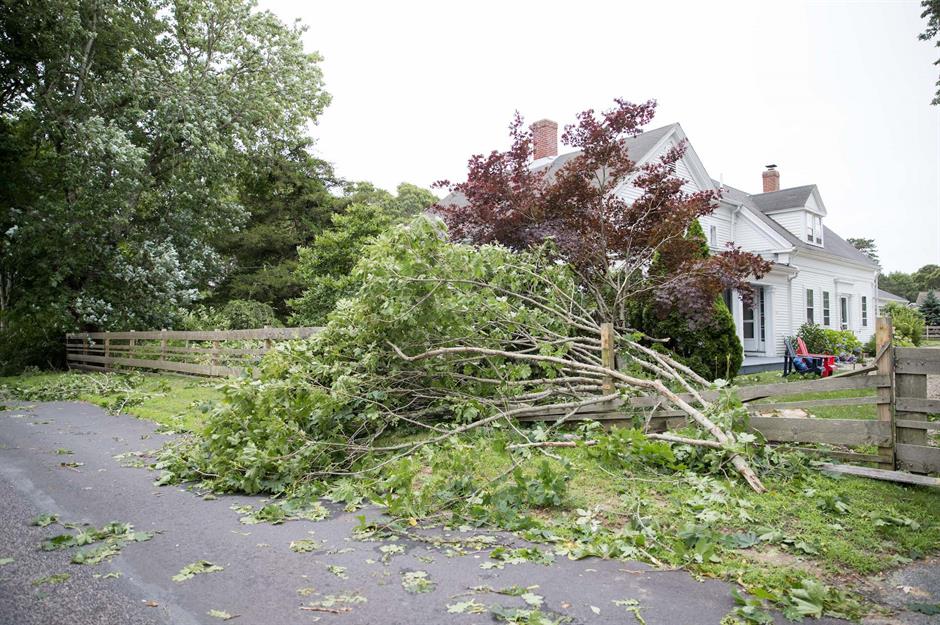
It’s uncommon for twisters to hit major cities but not unheard of

Generally speaking, tornadoes strike rural or lightly inhabited areas, but this is mostly due to chance and the relatively small size of cities than science, according to the Storm Prediction Center. But as urban areas expand, the likelihood of severe storms hitting heavily populated areas is higher. This was seen in March 2020 when two tornadoes tore into downtown Nashville. A tornado struck downtown Fort Worth, Texas in 2000 and in downtown Atlanta in 2008.
Discover which other states are more or less likely to experience tornadoes
The widest tornado ever recorded measured 2.6 miles (4.2km)
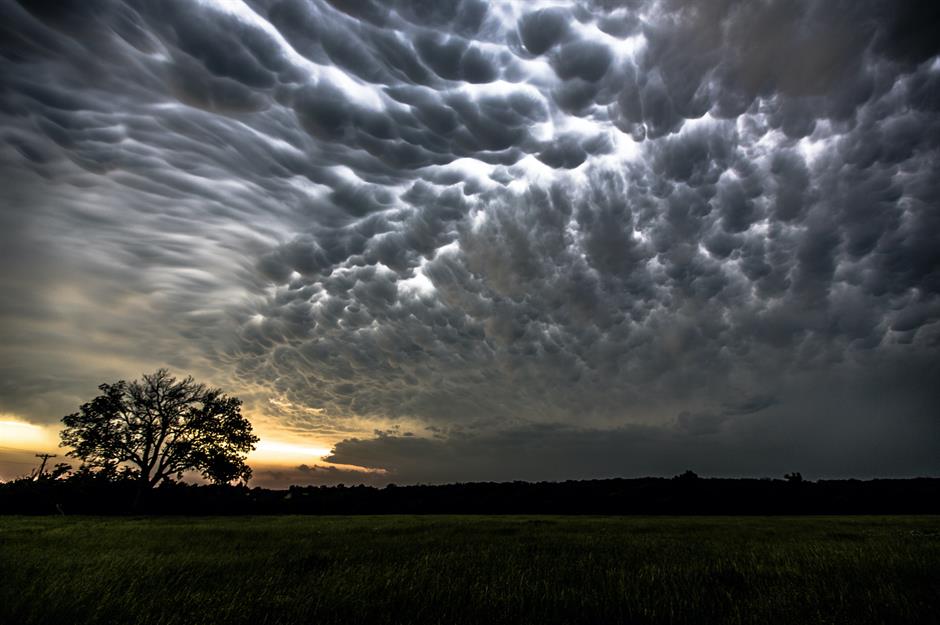
An EF-5 (a scale that measures the tornadoes on wind speed and related damage, with 0 being winds being 65-85mph and 5 being over 200mph) tornado that struck El Reno in Oklahoma on 31 May 2013 is the widest storm system ever to be recorded in the US at 2.6 miles (4.2km) wide, according to the National Weather Service. Sadly, the monstrous weather system, a multiple-vortex tornado, killed three of the country’s leading storm chasers who were following its course.
A town destroyed by a tornado harnessed the power of wind

After an EF5 tornado tore through the southern Kansas town of Greensburg in 2007 and caused near total destruction, the community refused to be cowed. In fact, many residents of the farming town banded together and rebuilt it as a model green community using renewable energy. Today Greensburg is the only US town that requires that all city-owned buildings to meet the US Green Building Council's LEED Platinum standards and all street lights are LED. A 12.5MW wind farm was built on the town’s outskirts, which generates three times more power than the town uses.
It can rain frozen iguanas in Florida
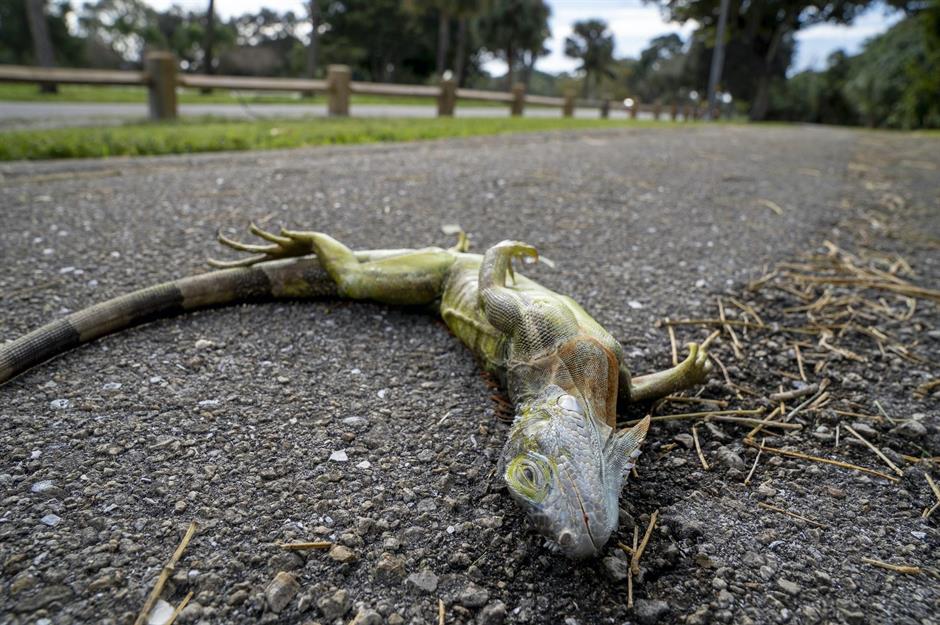
The National Weather Service issued a warning in January 2020 that frozen iguanas could shower the streets and green spaces of south Florida as temperatures dropped to lower than usual levels. Once temperatures sink to around 40°F (4.44°C) cold-blooded iguanas become immobilized, lose their grip and slip from trees. While the chilled critters may appear lifeless, they’re not actually dead.
Over a third of the country is in drought

According to the US Drought Monitor on 2 March 2021, moderate to exceptional drought covers 39% of the US including Puerto Rico and is affecting over 111 million people or about 35.7% of the population. The southwestern US is in the grip of a 20-year megadrought, which is classified by a period of prolonged and intense aridity that can last for decades. According to a study published in Science, global warming has pushed what would have been a moderate drought into megadrought territory.
Hurricane Harvey changed US rain maps forever
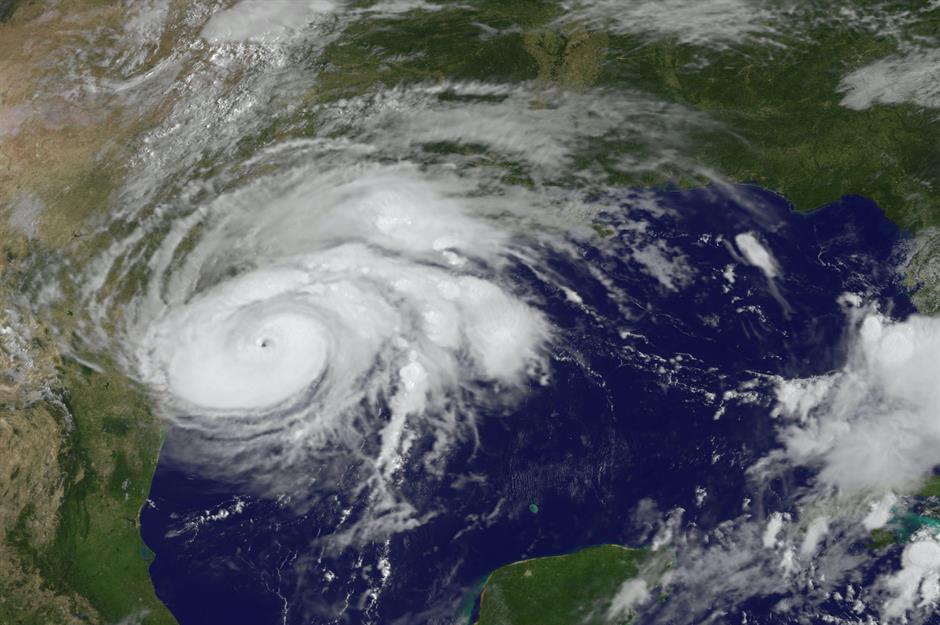
With more than 30 inches (76cm) of rain falling in just a few days in southeastern Texas, the National Weather Service had to update its rain accumulation map with a new color (lavender) to effectively display the graphics. On 27 August 2017, Houston alone received 16.07 inches (40.8cm) of rain, making it the wettest day in the city's history.
You can see moonbows
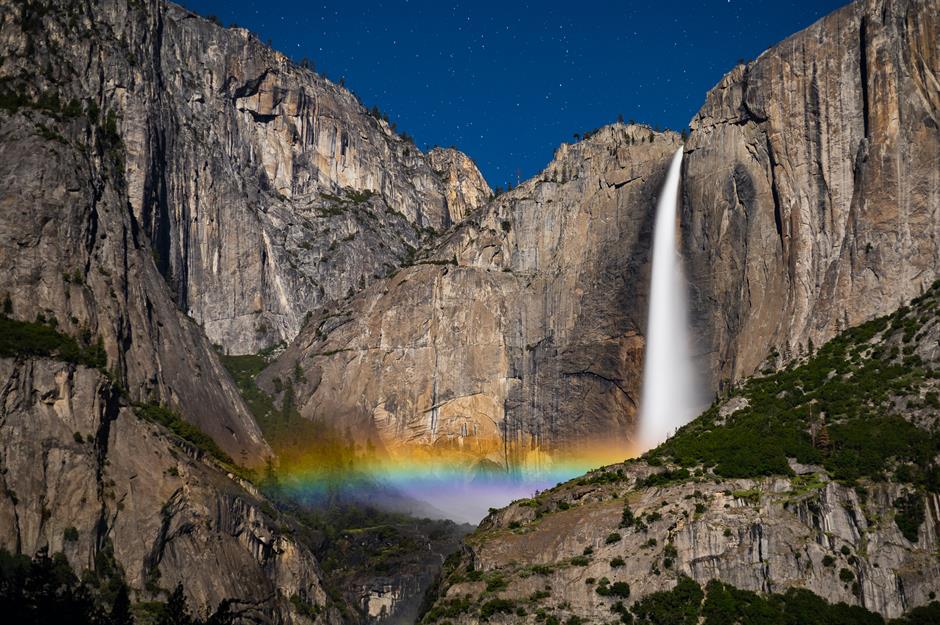
Moonbows or lunar rainbows are the work of moonlight rather than sunlight. They're far rarer, fainter and smaller than their daytime equivalents. The perfect conditions to see a moonbow are during a full moon – either around two to three hours after sunset or before sunrise – and you're more likely to see one near a waterfall. Yosemite National Park, California (pictured) and Cumberland Falls, Kentucky are two top places to see them in the US.
Take a look at more of the word's strangest weather phenomena
Waterspouts are a common sight in the Florida Keys
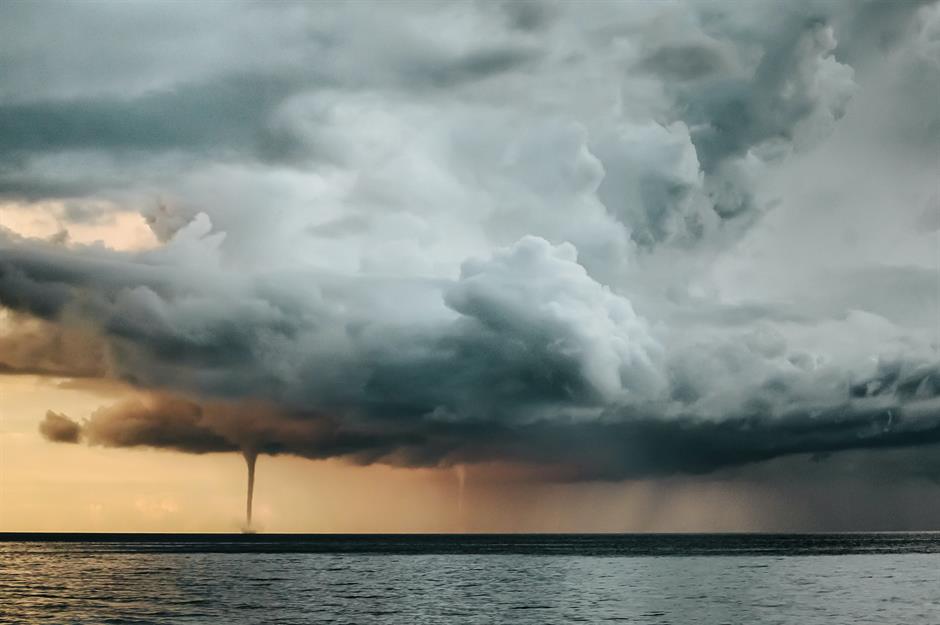
A whirling column of air and water mist, waterspouts are most commonly sighted along the Florida Keys and elsewhere along the Gulf of Mexico. They typically form during the late spring and summer months and are classified as either fair weather waterspouts and tornadic waterspouts. September is the peak month for waterspout activity over the Great Lakes: the region had its largest outbreak ever in 2020 with 232 waterspouts recorded, beating the previous record of 186 in 2012.
Sometimes the Grand Canyon is covered in a sea of fog
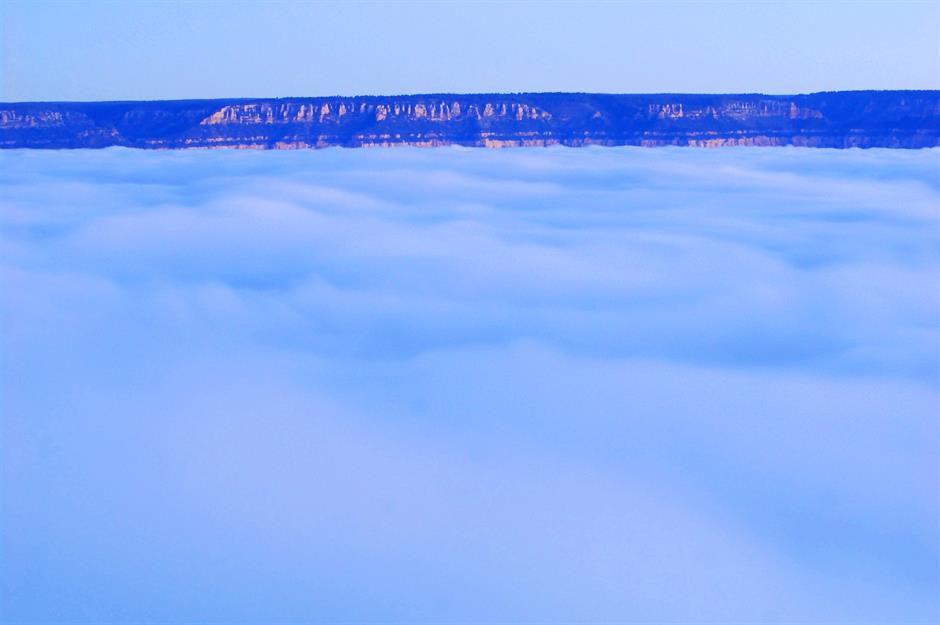
Hurricane Andrew unleashed giant pythons into the Everglades
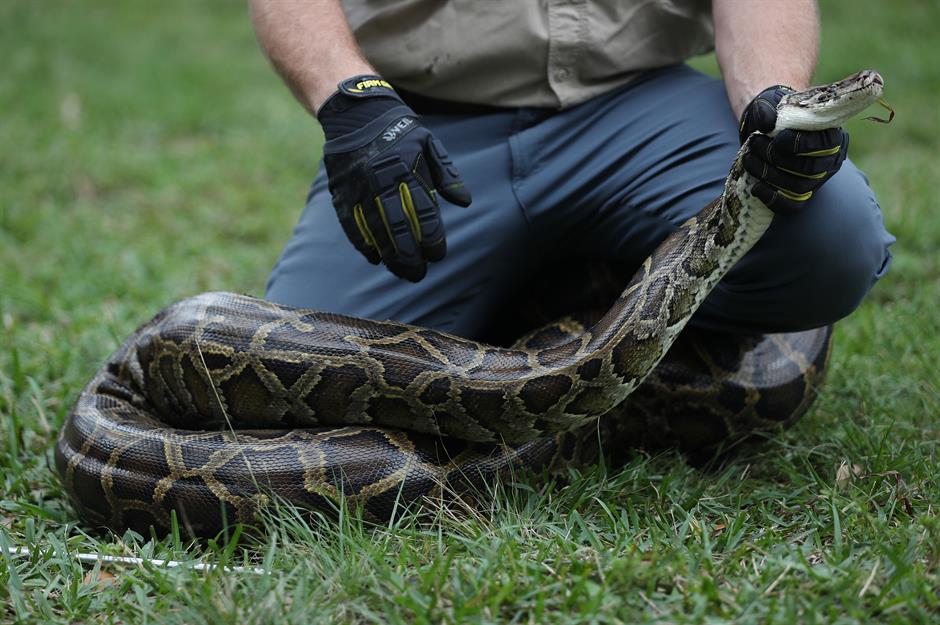
The powerful storm that hit Miami in 1992 wrought great devastation on the state of Florida and sadly continues to do so. Many exotic wildlife facilities were damaged during the storm, including a python breeding facility. It's thought possibly thousands of Burmese pythons, one of the world’s largest snakes, escaped into the nearby swamps. This invasive species, which has no natural predator and is a prolific breeder, has devastated the mammal population of the Everglades and is severely threatening its biodiversity.
Largest hailstone fell in South Dakota

When the town of Vivian in South Dakota was battered with strong winds and scattered with giant hailstones during a heavy storm in July 2010 they broke the record for the largest hailstone ever to be recorded in the US. The whopping item, known as a hail bomb, measured eight inches in diameter (45.7cm), 18.625 inches (47.3cm) in circumference and weighed 1.9375 pounds (879g).
Now see astonishing images of the world's worst weather since 1900
A Vermont farmer unlocked the magic of snowflakes

We have the life-long passion of a single man for snow, Wilson A Bentley, to thank for the extraordinary and mind-blowing fact that every snowflake that falls has its own unique design. At the age of just 19, the Jericho-based 19th-century farmer pioneered the technique of photomicrography through which he captured the beauty and one-off fragile form of snowflakes. He photographed 5,000 of them in his lifetime.
2020 was a record-breaking hurricane season
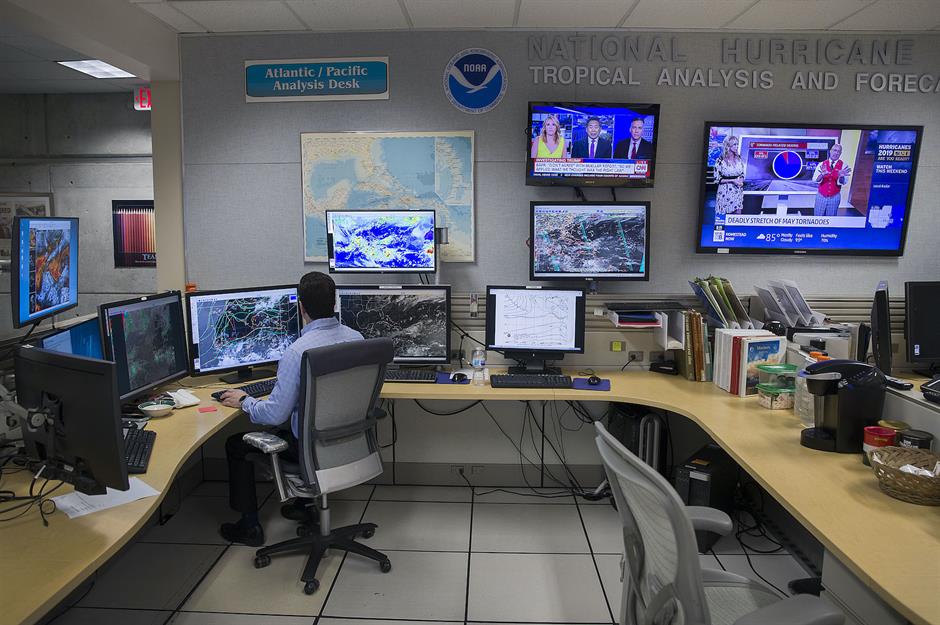
When subtropical Storm Theta developed in November 2020, it broke the single season record for the most named storms in the northeast Atlantic, beating the 2005 hurricane season. It was the 29th named storm but by the end of the season there were a record-breaking 30 named storms, including 12 landfalling ones. The previous record was nine landfalls in 1916. Five of 2020's powerful storms came ashore in Louisiana. A normal season sees on average 12 named storms.
These are the out-of-season weather events that shocked the world
2020 was California’s worst wildfire season ever

California sweltered in extreme heat in the summer of 2020 and experienced their worst wildfire crisis on record with fires sweeping across millions of acres of the state, as well as Oregon and other parts of the west. An unusual lightning storm in August was partly to blame, sparking dozens of smaller fires that merged into an almighty blaze. More than 3.2 million acres burned in California alone, greatly surpassing the state’s 2018 record of more than 1.9 million acres.
The groundhog has a 50:50 chance

World-famous furry weather forecaster Phil appears in front of the crowds at Gobbler’s Knob in Punxsutawney, Pennsylvania every 2 February. According to tradition, if the groundhog emerges from his burrow and casts a shadow the country will see six more weeks of winter weather, but if there is no shadow spring will arrive early. But is the rodent right? It’s a 50:50 chance, according to the latest analysis by NOAA, which compared national temperatures with Phil’s forecasts and found he got it right 50% of the time over the past 10 years.
Mount Washington holds the record for the fastest wind gust ever recorded in the US

It had held the world record for the fastest wind gust ever recorded on the surface of the Earth – a wind speed of 231mph (372km/h) was recorded by Mount Washington Observatory staff on 12 April 1934 – up until 1996. The New Hampshire observatory was beaten by a powerful gust Down Under when an unmanned instrument station in Barrow Island, Australia, recorded 253mph (407km/h) during Tropical Cyclone Olivia.
Lightning hits the Empire State Building 23 times a year

'Lightning doesn’t strike twice' is an old wives' tale with repeat lightning strikes highly likely – the Empire State Building is struck on average 23 times a year. In 2020, the US recorded 15 deaths by a lightning strike, with 40 in 2016. June, July and August are peak months for lightning activity across the country with most outbreaks happening in Florida and Texas. The Sunshine State had the highest density of lightning strikes. While Texas had the highest flash count, with 2,483,805 negative cloud-to-ground flashes, according to Vaisala's US National Lightning Detection Network.
California has record-breaking snow
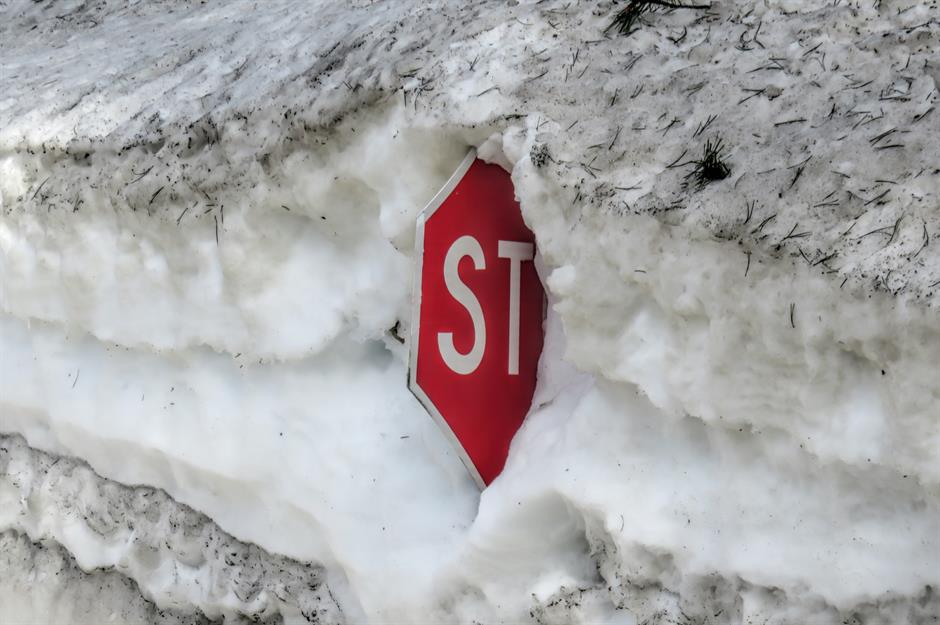
Tamarack in California’s Sierra Nevada mountains holds the record for the most snow recorded in a calendar month – it received 32ft 6in (10m) in January 1911. It also had the greatest snow depth ever measured – a whopping 37ft 6in (11.4m) was recorded on the mountain on 11 March 1911.
These amazing images show snow and ice in places you'd never expect
It also has pink snow
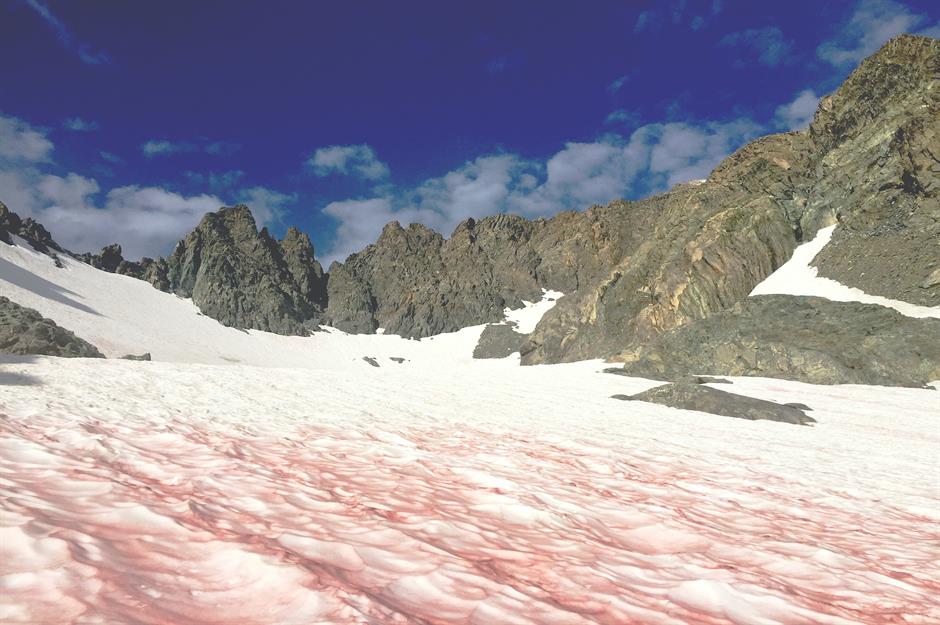
California's Sierra Nevada mountains are as pretty as a picture in winter, but so too later in the year when the snow can turn a striking shade of pink. This bizarre phenomenon, sometimes known as watermelon snow, is caused by algae. Although usually green, when the weather warms up and the snow starts to melt the algae releases a red pigment to protect itself from heat and UV radiation. Pink snow also occurs in Colorado’s alpine mountains.
In 2020, the world's longest lightning bolt struck the US
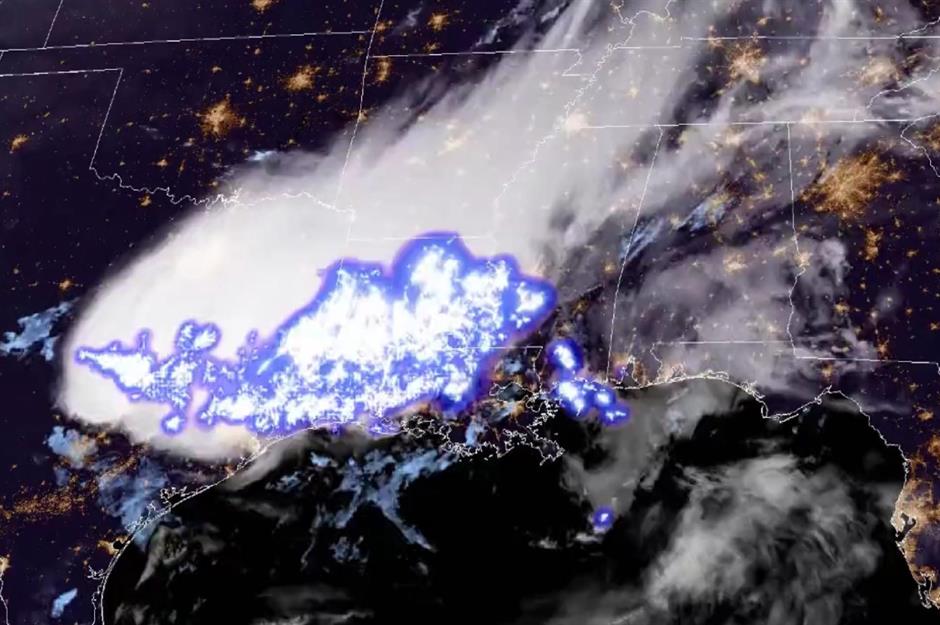
In April 2020, a massive lightning bolt stretched 477.2 miles (768km) across the sky over the states of Texas, Louisiana and Mississippi. According to the World Meteorological Organization, the megaflash, with a length equivalent to the distance between New York City and Columbus, Ohio, is the longest single flash ever recorded, breaking the previous world record set by Brazil in 2018 of 440.6 (709km) miles. It was confirmed in February 2022.
Comments
Be the first to comment
Do you want to comment on this article? You need to be signed in for this feature